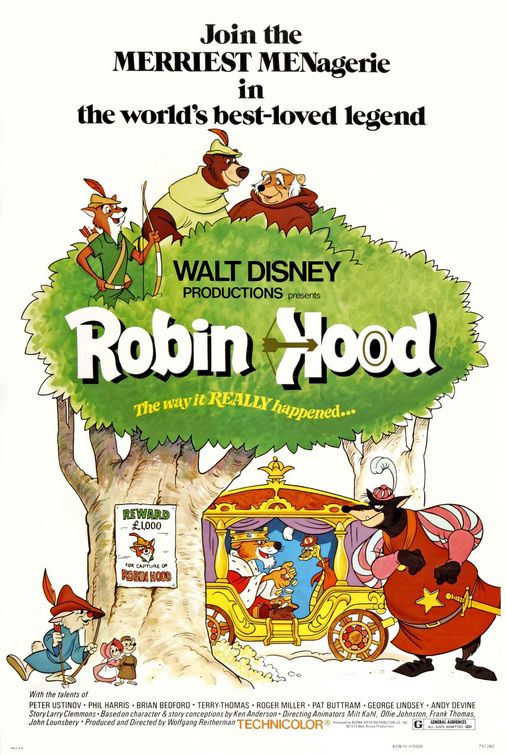The email sent will contain a link to this article, the article title, and an article excerpt (if available). For security reasons, your IP address will also be included in the sent email.
 Tim here. We’re celebrating 1973 at the Film Experience all throughout July, and in terms of animation, that can mean one of only two things: the Czech-French allegorical science fiction film Fantastic Planet, a peculiar head trip of a movie made with highly-detailed paper animation, or Disney’s all-animal Robin Hood, a film regarded as one of Disney’s most perfect classics by a small group of people while being largely forgotten by most younger people, making it one of those films that’s simultaneously both over- and under-rated. All my love and respect to politically laden avant-garde Eastern European animation, but our current path seems clear enough: Robin Hood it is.
Tim here. We’re celebrating 1973 at the Film Experience all throughout July, and in terms of animation, that can mean one of only two things: the Czech-French allegorical science fiction film Fantastic Planet, a peculiar head trip of a movie made with highly-detailed paper animation, or Disney’s all-animal Robin Hood, a film regarded as one of Disney’s most perfect classics by a small group of people while being largely forgotten by most younger people, making it one of those films that’s simultaneously both over- and under-rated. All my love and respect to politically laden avant-garde Eastern European animation, but our current path seems clear enough: Robin Hood it is.
I will first confess that the film has never been one of my favorites in Disney’s canon; it exemplifies a very particular aesthetic that dominated the studio’s work for just a short while, seven features released between 1961 and 1977. These were the Xerox Years, when the old process of inking individual cels by hand over the animators’ rough pencil drawings had been replaced by simply photocopying the pencils directly onto the clear celluloid. This cut down significantly on the cost and time of putting together a feature film, and it also had the effect of giving the finished animation a much scratchier, hand-hewn look. For many fans of animation, and many animators, the direct one-to-one mapping this results in between what the artist drew and what we see makes it more valuable than the glossier, more polished, and arguably more lifeless work in Disney’s more expensive productions. For myself, all I can see is the cost-cutting.
But let's shelve the technical chatter and move on to the film itself...


 Return to Article
Return to Article